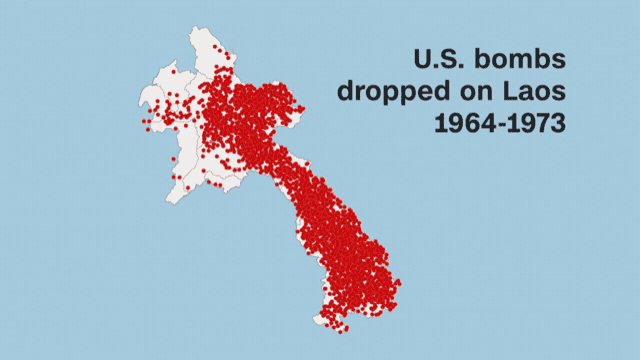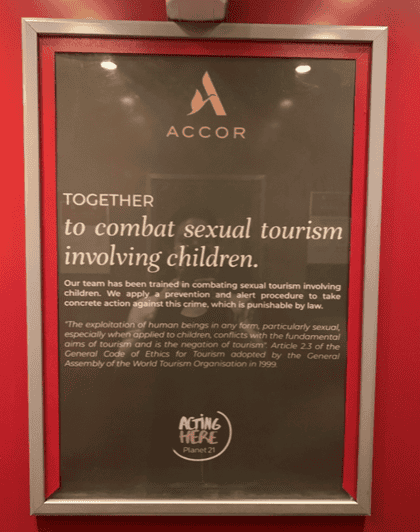I was in Vientiane, Laos, for the first time recently. Going to Laos was like taking a time machine back to Thailand’s 1980s. I went there solely out of curiosity to explore how our neighbor was doing. I learned that Laotians spoke Thai, watched Thai soap operas, listened to Bodyslam, and enjoyed krapao kai just like us Thais. They worshipped the same deities and had the same aspirations as us.
Indeed, Laotians are in fact our brothers and sisters. We share the same culture and tradition, especially in the North and Northeast of Thailand. Today, there are more Laotians living in Esarn than in Laos. (Laos has a population of approximately 7.4 million – a 1/10 of Thailand’s.)
So similar are both countries, with the same roots and value system that, dare I say, we should merge into one nation-state. It’s like the merging of East and West Germany. Or the merger of Exxon and Mobil.
Totally makes sense.
Totally ain’t going to happen …
We once fought one another as well as were allies in fighting the Burmese aggression.
Laos’ kingdoms (Luang Prabang and Vientiane) had been under Siam’s control until we had to sacrifice those territories to the French imperialists in the 1890s to retain our sovereignty. It’s what I call “Losing an arm to survive” strategy. It was the price we had to pay.
Come post-WW2, after the defeat of the Japanese, ending their occupation, the French returned. Nationalism then surged until the French granted the country independence.
Alas, as had occurred elsewhere, when the foreign overlords left, conflicts often emerged among the local elites as to the direction of the country. Communism swept through as a powerful global ideology. Consequently, the Royal Lao Government fought against the Pathet Laos communist faction, backed by North Vietnam.
My Geopolitical Rule number 1: “You’re screwed if you live next to a conflict zone. For you’ll most likely be dragged into it whether you want to or not”
During the Vietnam war, despite being neutral, Laos happened to be located in a very unfortunate but strategic place. For, Laos in the East (along with Eastern Cambodia) contained the Ho Chi Minh trail which was a network of roads and trails for the Vietcong to send supplies, weapons, and troops into South Vietnam. It was the Vietcong’s lifeline, in other words. As a result, the US air force (using Thai airbases in Don Muang, Udon, Korat, Ubon, and U-Tapao) bombed Laos and Cambodia to smithereens.
That’s right, at the time we made a deal with the Americans to fight off communism in the region.
Here is a fact: Laos is the most bombed country per capita in the world. 270,000,000 bombs (2 million tons of ordnance in 580,000 bombing missions) were dropped on Laos’ soil for 9 years – every 8 minutes on average, 24 hours a day. A 1/3 of those cluster bombs didn’t explode upon impact. And you guess it – until some poor souls stepped on them today, blowing their legs apart.


There was initially a power-sharing scheme between the Royal Lao Government and Laos communists. However, once the Vietcong won the war, feeling emboldened the communists seized power, overthrowing the king, with him ending up dying in a labor camp. Capitalism and Buddhism were wiped off Laos subsequently until their revival in the 1990s.
I was in Laos to make sense of what had happened in the past. To connect the dots, so to speak. To appreciate its past, present, and their future.
Today Laos remains largely a poor country ($2,500 nominal GDP per capita), notwithstanding Chinese money and investments flowing in. I feel sorry for the fact that most of their goods are pricey because they had to be imported from Thailand. For instance, PTT gas stations in Laos on the day I was there were charging the equivalent of 73 THB per liter for gasohol 95 (relative to Thailand’s 50 THB).
In terms of tourism, Thailand has everything Laos has and much more. Beautiful waterfalls, lakes, and mountains? We have them here in the north. Cuisines? We beat them too. Being landlocked means Laos neither has beaches nor fresh seafood, unlike in Southern Thailand. They have Luang Prabang; we have Pai, Mae Hong Son, and Chiang Rai.
That said, my hotel GM I was staying at, who loves Chiang Mai, reckoned Vientiane is Chiang Mai 15 years ago. Which means once covid-19 is over, Vientiane may be ripe for a boom in business and tourism, with Thai, Chinese, French, and other investments flowing in.
During my stay in the hotel, inside the elevator I saw this sign:

This sign ruined my coffee moment.
That’s right, there are many “beasts” in Laos. One was the secret war that the US had waged on them, as I’ve already described. The other beast is child sex tourism. The fact that this sign was prominently displayed in the elevator suggested to me that child sexual exploitation is still rife in Laos.
Indeed an American man was indicted in the US in 2020 on pedophilia and sex trafficking charges in Luang Prabang. He had used a charity as a front to teach Laotian boys English, all the while grooming them for sex. He gave them free rent in exchange for sexual favors. Many good-hearted Americans unwittingly had sent him money in the belief that he was doing a good cause.
According to a Laos UNICEF survey in 2018, 1/10 children experienced some form of sexual abuse. And a 1/5 of girls and a 1/3 of boys had been sexually abused when they were 13 or younger.
Ominously, pedophiles are increasingly going online, becoming “cyber-pedophiles,” creating their own private chat groups, paying subscriptions to watch children getting sexually abused – live. Like I have written in my previous articles, I don’t mind women (and men) plying the oldest trade to make a living and feed their families so long as they are of legal age and consent to the job. But I draw the line where child prostitution is concerned. For, their brains aren’t even fully developed to make rational decisions and to grasp the implications of their actions.
This is where the vast American intelligence agencies in the region and the local authorities (Laos, Cambodians, Thais) can cooperate to bust child sex-trafficking rings. (To the US government: you’ll earn more respect from this region by dismantling these rings than feeding weapons and billions of dollars to Mr. Zelensky in a proxy war.)
In sum, the beauty of Laos is its kinship to Thais and Thailand. Vientiane and Nong Khai are only 20 km apart, separated by the Mekong river. Yet, we end up today radically different due to our divergent historical circumstances and the choices our respective ancestors took.
The world has yet to see the “Laotian smile.”
I do hope Laos will prosper – whether they’ll follow China’s footsteps or ours, it doesn’t really matter so long as their people thrive.
